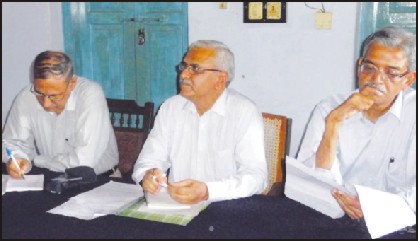Coorg
The air smelled green. For someone from the city who is used to the smell of petrol fumes, garbage and fried food, inhaling this crisp, clean air was a real treat.
My drive on the winding roads of Coorg transported me to another world. I put my head out of the car to click away at the Kodava houses lining the roads, quaint churches and local shops. My photo sessions attracted some curious glances from local women. I had officially arrived for my weekend in the coffee district of Karnataka, and my stay at one of the most luxurious resorts in the region was about to begin. As the rains pelted the roof of my cottage at Tamara Coorg, a luxury resort situated in the picturesque confines of lush verdant coffee plantations, I opened my eyes to the breathtaking view, wishing I could wake up to this every day.
The mist kissed the foreheads of the silver oaks and the rosewoods, as I walked to the balcony with a hot mug of bella kapi. I sipped the aromatic yet comforting black coffee laced with cardamom and flavoured with jaggery, while listening to the symphony of cicadas and birdcalls. The fresh taste of coffee resurrected my soul and prepared me for the invigorating plantation walk that my hosts at the resort were kind enough to organise.
After being playfully warned about the leeches by the resort’s guide, I remained skeptical about the trek around the 170-acre Kabbinakad Estate, tucked inside the resort. “Don’t worry, madam, leeches will only suck out the bad blood, and you won’t even feel the pain. You know they are now being used for medical treatments in several parts of the world,” he said. Nevertheless, his scientific explanation failed to comfort me as I tied my shoe laces tight, determined not to have my blood sucked out. ‘Just enjoy the walk, and take in the natural beauty,’ I told myself.
Natural fortress
Built strategically around landscaped waterfalls and glistening streams, the resort is home to some rare species of flora and fauna. As we walked around the plantation, we had the electro-pop background score of gushing falls and cicadas follow us wherever we went. “Hey, but why can’t I smell the coffee?” I asked out of ignorance. “Well, you won’t smell coffee here. But you will see the beans in different stages of growth,” my well-informed guide explained. Arabica and Robusta, the two kinds of coffee plants, are grown at the estate, which is dotted with cardamom plants and pepper vines.
Handing me a bright green pod, the guide said, “Just bite into it and tell me what it is.” As I nibbled on the pod, suspiciously, waiting for some allergic reaction to pop out, a fragrant taste exploded my palate. “It’s cardamom, isn’t it?” I shouted excitedly. Finding my daily food ingredient in its freshest form left me hungry for more. By the end of the walk, I had savoured passion fruit right off a tree, watched in awe at the bitter lime tree pregnant with fresh fruits and beautiful wild mushrooms.
Bird-watchers too have something to look forward to at the resort, as one can find some rare avian species, including Malabar trogons, Nilgiri laughing-thrushes, great black woodpeckers, and Malabar whistling-thrushes (that are a part of the night-time orchestra). Apart from these, yellow-browed bulbuls, Pacific swallows, grasshopper warblers, orphean warblers and yellow-billed babblers can also be spotted.
Coffee kicks
After teasing the touch-me-nots, collecting some rudraksha berries and clicking away at the luscious red ginger flowers and pristine white coffee blossoms, it was time to call it a day. But the coffee lover in me was still to be satiated. And the best was yet to come. The resort definitely knows how to woo coffee addicts, and my experience at The Verandah at Tamara Coorg made me fall in love with the drink that half of the world kick-starts the day with. Right from handpicking the fresh beans, drying them, roasting them, sifting through them and grinding them, coffee-making is nothing short of an art form. And the experience of making my very own brew made me feel like an alchemist. And the secret to pure healthy brew is roasting and grinding your own beans.
A visit to Coorg will be incomplete without sampling the authentic Kodava cuisine that includes the famous pandi curry (pork curry) and koli barthad (chicken fried in spices). But for a vegetarian like me, it was best to tip-toe around the meaty dishes and stick to the green zone — lip-smacking mangye pajji (ripe mango curry), kadambuttus (rice dumplings), kumm curry (mushroom curry), akki rotis, banana fritters and sumptuous payasam.
Coorg is blessed with nature’s bounty. Apart from plantation tours, one can trek to the nearby Manje Motte view point, Pathi Pole Falls and Ballyaatre Ridge. For wildlife and history enthusiasts, this quaint hamlet has a lot to offer in the form of Pushpagiri Wildlife Sanctuary, Nagarhole National Park and Madikeri Fort. As the afternoon sun gave way to the golden light of dusk, dark clouds gradually invaded the sky. The rains pounded the earth with all their might, bringing to life every inch of the green surroundings. The perfect weather to cuddle up and read. Another day had come to an end in the land of the brave Kodava warriors, and I slept fitfully to the lullaby of noisy cicadas.
source: http://www.deccanherald.com / Deccan Herald / Home> Supplements> Sunday Herald travel / by Arundhati Pattabhiraman / August 17th, 2014



